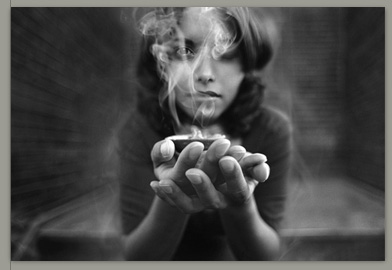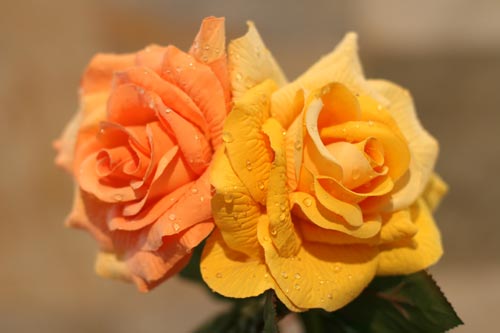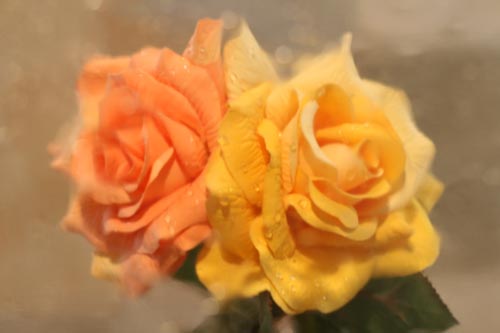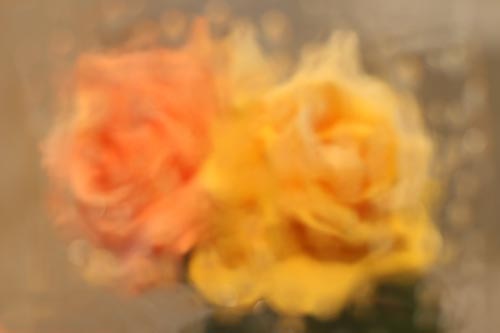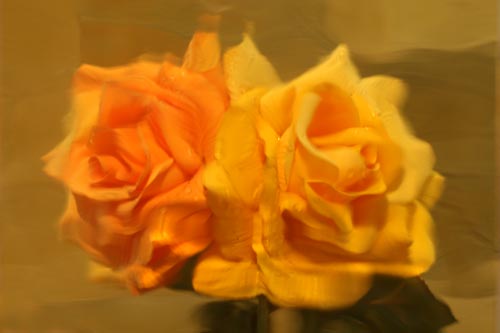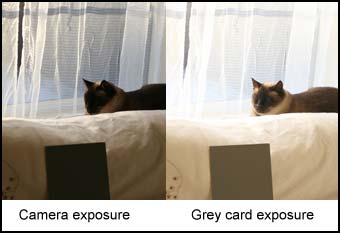[Camera clicks]
This is an audio transcription — Spelling, punctuation and grammer may not be perfect
Marko Kulik:‚‚‚‚‚‚‚‚‚‚‚‚‚‚‚ Hi there everyone and welcome to the Photography.ca Podcast on Photography.ca.‚ My name is Marko.‚ We are coming to you from Montreal.‚ Today is December 24, 2006.‚ So, it is the day before Christmas and we are all having some fun, getting ready for the holidays and I have decided to put together a podcast with a fine art photographer, Dita Kubin from Montreal.‚ So, we actually were able to do a telephone interview together and you are going to listen to it very shortly.‚ The interview lasts about 20 minutes, so I am going to get into it right away and with that, I guess I just want to wish all the listeners the happiest holiday season possible and a Happy New Year as well.‚ Thanks so much for listening to our shows.‚ We intend to do so many more during 2007 and we are going to do many more interviews.‚ We would love to get your comments, so whatever you have to say, send it to us on the blog by e-mail, on the bulletin board and it will be my pleasure to discuss anything you like with you.‚ So, Happy New Year everyone and on that note, let us get into the interview now.
So, I would like to welcome a really special guest today.‚ Our guest is Dita Kubin and she is a fine art photographer in Montreal.‚ I would like to welcome her to the show and we are going to ask her a couple of questions and hopefully, she will give us some insight into her art and her activity.‚ Welcome, Dita.
Dita Kubin:‚‚‚‚‚‚‚‚‚‚‚‚‚‚‚‚‚‚ Thank you.‚ Thank you very much.
Marko Kulik:‚‚‚‚‚‚‚‚‚‚‚‚‚‚‚ Excellent.‚ Good.‚ Nice.‚ Welcome.
Dita Kubin:‚‚‚‚‚‚‚‚‚‚‚‚‚‚‚‚‚‚ Thank you.‚ Thank you very much.
Marko Kulik:‚‚‚‚‚‚‚‚‚‚‚‚‚‚‚ First off, you have a very unusual website name for people that wants to go and visit your photography and it is Phudge.ca.‚ Phudge is spelled P-h-u-d-g-e, Phudge.ca.‚ How in the world did you end up choosing Phudge.ca?
Dita Kubin:‚‚‚‚‚‚‚‚‚‚‚‚‚‚‚‚‚‚ Well, what is funny I guess is people’s reaction to it because I think that it is pretty obvious and people often also mispronounce it and they say, “Fyudge.”‚ That is pretty funny to me.‚ Actually, it is pretty simple.‚ Phudge, obviously, photography with the ph.
Marko Kulik:‚‚‚‚‚‚‚‚‚‚‚‚‚‚‚ Yeah.
Dita Kubin:‚‚‚‚‚‚‚‚‚‚‚‚‚‚‚‚‚‚ Phudge, well, the idea that it is all just visual dessert, visual pleasures and not to take it so very seriously because I think that within sort of this arts, arts milieu, there is this tendency to take everything so seriously and everything has this heaviness about it that I just absolutely did not want to go there with the art that I was making.‚ I just wanted it to be kind of a light thing, a very light thing.‚ It is not brain surgery.
Marko Kulik:‚‚‚‚‚‚‚‚‚‚‚‚‚‚‚ So, it is just very, very playful.
Dita Kubin:‚‚‚‚‚‚‚‚‚‚‚‚‚‚‚‚‚‚ Yeah, it is.‚ It is.‚ I find the whole art process to be therapeutic and playful for the individual and not to get stuck behind the heavy concepts of art.
Marko Kulik:‚‚‚‚‚‚‚‚‚‚‚‚‚‚‚ Excellent.‚ Okay.‚ That is great.‚ Well, thanks for that introduction.‚ So, I would like to get right into it with you.‚ A lot of your photographs, they caught my eye, which is definitely one of the reasons that I contacted you.‚ I definitely find your photographs somewhat unusual.‚ Is there some way you can describe your creative process a bit?
Dita Kubin:‚‚‚‚‚‚‚‚‚‚‚‚‚‚‚‚‚‚ Well, unusual, an interesting adjective to describe my‚¦
Marko Kulik:‚‚‚‚‚‚‚‚‚‚‚‚‚‚‚ They are unusual, just let me clarify.‚ They are unusual in that they make you look twice.‚ They are just not like the regular head and shoulders portraits within an environment.‚ There is other stuff definitely going on.‚ I guess for that reason, they caught my eye.‚ So, back to the question.
Dita Kubin:‚‚‚‚‚‚‚‚‚‚‚‚‚‚‚‚‚‚ Right.
Marko Kulik:‚‚‚‚‚‚‚‚‚‚‚‚‚‚‚ Can you describe the process a bit?
Dita Kubin:‚‚‚‚‚‚‚‚‚‚‚‚‚‚‚‚‚‚ I guess you are talking mostly about the last series that I had been working on.‚ That series, I was working on for two years.‚ It actually began originally because I needed a couple of images to donate to an art show and I had nothing new.‚ I just decided to photograph someone and I was just experimenting in ways that I had not done before.‚ When I started to put the image together, all of these really interesting technical elements started coming out and I had such a fun time working on it that I decided to actually to try to push this sort of technique that I did not even know what I was doing at that time just to push it further and see what I could get out of it.‚ For me, it began very much as a technical exploration.‚ I did not really have any preconceived ideas of what I wanted to do.‚ Then when an image kind of made itself, I stood back and I quite enjoyed what the result was, then decided that I would try a couple more portraits in that vein to see if there was something in it.‚ When I had then the next two, I just somehow really opened my eyes and enjoyed so much the process of it that I decided I would do a whole series of that.
Marko Kulik:‚‚‚‚‚‚‚‚‚‚‚‚‚‚‚ Let us talk about one photo in particular and we are also going to put that as the main photo for this entry in the Photography.ca blog.
Dita Kubin:‚‚‚‚‚‚‚‚‚‚‚‚‚‚‚‚‚‚ Okay.
Marko Kulik:‚‚‚‚‚‚‚‚‚‚‚‚‚‚‚ Let us talk a little bit about the Soma portrait that you did.
Dita Kubin:‚‚‚‚‚‚‚‚‚‚‚‚‚‚‚‚‚‚ Right.
Marko Kulik:‚‚‚‚‚‚‚‚‚‚‚‚‚‚‚ How was that portrait constructed?‚ Can you describe the process a bit for that one in particular?
Dita Kubin:‚‚‚‚‚‚‚‚‚‚‚‚‚‚‚‚‚‚ That one in particular was one of the harder ones that I had made although considering that this was a two-year project, the earlier ones were not as elaborate, as complicated because I was not in the place where I understood what I was doing very much.‚ So, this was the first very difficult one I had set for myself thinking, “There’s no way I’m gonna be able to do this, but let’s just go and try.”‚ Obviously, for the main reason that you cannot control smoke and what it is doing.
Marko Kulik:‚‚‚‚‚‚‚‚‚‚‚‚‚‚‚ Yeah.
Dita Kubin:‚‚‚‚‚‚‚‚‚‚‚‚‚‚‚‚‚‚ So, I had invited this woman, Soma, to pose for me.‚ She is a friend of a friend.‚ We just brought sort of props with us to the studio.‚ I rarely shoot in a studio, but I thought that with the smoke and it was still quite cold out, that this was the best place.‚ It was all shot with ambient lights, so no flash in that at all.‚ We just played around with very many different sort of I would say compositions because we were within one setting, so there was not too much we could do with that and just sort of played.‚ There was no real, again, preconceived idea of what the final image would be although I had thought that I really wanted to do an image where she was lying on the ground and the smoke was coming up towards me, that was one thing that I thought would work.‚ It did not at all.‚ I really found myself to be quite smoked very quickly.‚ It was coming into my face.‚ It was hilarious at the same time because I just could not see anymore.‚ There was so much smoke in my face.‚ Yes, we laughed and then we just continued doing different things and it ended up that after the shoot was over, I did not really know what would result from it.‚ After I processed my negs, I had my proofs I started to see what could be possible, that only this idea came out.
Marko Kulik:‚‚‚‚‚‚‚‚‚‚‚‚‚‚‚ Okay.
Dita Kubin:‚‚‚‚‚‚‚‚‚‚‚‚‚‚‚‚‚‚ At that point, which is actually how I do all of the portraits, is that I reviewed all of my shots and started to see how I could make it work towards a final.‚ I worked with sort of low res maquettes at first because there were so many images involved that I sort of weed out what does not work and work my way to a final.‚ With the small maquette, I was doing in this direction of the final one.
Marko Kulik:‚‚‚‚‚‚‚‚‚‚‚‚‚‚‚ For those, I am sorry to interrupt.‚ For those people that do not know what a maquette is, can you give us a quick definition?
Dita Kubin:‚‚‚‚‚‚‚‚‚‚‚‚‚‚‚‚‚‚ Sure.‚ It would just be basically a model to work by.‚ So, what I do is I work different variations, different small scale models.
Marko Kulik:‚‚‚‚‚‚‚‚‚‚‚‚‚‚‚ Okay.
Dita Kubin:‚‚‚‚‚‚‚‚‚‚‚‚‚‚‚‚‚‚ Then I weed out the ones that are not working visually or technically and then I start working towards the ones that do.
Marko Kulik:‚‚‚‚‚‚‚‚‚‚‚‚‚‚‚ Okay.
Dita Kubin:‚‚‚‚‚‚‚‚‚‚‚‚‚‚‚‚‚‚ So, they are just like quick working copies, if you will.
Marko Kulik:‚‚‚‚‚‚‚‚‚‚‚‚‚‚‚ Excellent.
Dita Kubin:‚‚‚‚‚‚‚‚‚‚‚‚‚‚‚‚‚‚ So, this one started to form in front of me.‚ You are asking me how exactly was this one made because so much of the work is postproduction.
Marko Kulik:‚‚‚‚‚‚‚‚‚‚‚‚‚‚‚ Yeah.‚ It looks like it might be using more than one photograph.‚ Is that correct?
Dita Kubin:‚‚‚‚‚‚‚‚‚‚‚‚‚‚‚‚‚‚ Yeah.‚ I believe that this one and it is funny, I do not have an exact count for any of them, but this one would be anywhere between 8 and 11 images‚¦
Marko Kulik:‚‚‚‚‚‚‚‚‚‚‚‚‚‚‚ Wow!
Dita Kubin:‚‚‚‚‚‚‚‚‚‚‚‚‚‚‚‚‚‚ That were used to make this one.‚ The idea being that it would be seamless in how it is blended together.
Marko Kulik:‚‚‚‚‚‚‚‚‚‚‚‚‚‚‚ Yeah.
Dita Kubin:‚‚‚‚‚‚‚‚‚‚‚‚‚‚‚‚‚‚ But not necessarily seamless that it looks like one single image.‚ The images that I made after this one are more narrative and obviously, they are not always realistic.‚ So, you know that it is not made with one image.
Marko Kulik:‚‚‚‚‚‚‚‚‚‚‚‚‚‚‚ Right.‚ Are all the images that you used of the same shoot or some can be taken from completely different times and places?
Dita Kubin:‚‚‚‚‚‚‚‚‚‚‚‚‚‚‚‚‚‚ I started that it would be just one shoot and then got into the mindset to be a puritan, that I had to use it from one, but again, I was reminded by another artist friend of mine to just not limit what you are making in any way.
Marko Kulik:‚‚‚‚‚‚‚‚‚‚‚‚‚‚‚ Okay.
Dita Kubin:‚‚‚‚‚‚‚‚‚‚‚‚‚‚‚‚‚‚ So, I threw that idea out and I started using images from other shoots with other people in fact.
Marko Kulik:‚‚‚‚‚‚‚‚‚‚‚‚‚‚‚ Okay.
Dita Kubin:‚‚‚‚‚‚‚‚‚‚‚‚‚‚‚‚‚‚ I do not do that very often, but sometimes it works and sometimes I will have something from a year ago that I shot that has been waiting to be used and I just do not know in what way and that was partly the case with this one.
Marko Kulik:‚‚‚‚‚‚‚‚‚‚‚‚‚‚‚ Okay.‚ Are these blended using something like Photoshop?
Dita Kubin:‚‚‚‚‚‚‚‚‚‚‚‚‚‚‚‚‚‚ Yes.‚ It is all Photoshop.
Marko Kulik:‚‚‚‚‚‚‚‚‚‚‚‚‚‚‚ Okay.
Dita Kubin:‚‚‚‚‚‚‚‚‚‚‚‚‚‚‚‚‚‚ Yeah.
Marko Kulik:‚‚‚‚‚‚‚‚‚‚‚‚‚‚‚ How long would it have taken you to create to this particular image?
Dita Kubin:‚‚‚‚‚‚‚‚‚‚‚‚‚‚‚‚‚‚ Well, it is funny because I do not sit down and work at it until I finish.‚ I really need to let them breathe for a while.‚ For this one, what I would have done was I worked on a small maquette at first, so maybe that would have been a two-day kind of thing.‚ Scanning, cleaning them, working maquettes and then I have to let them sit because I am not sure in what direction to go into.‚ This one I know I left actually for about two months.‚ I just really did not know what to do with it.
Marko Kulik:‚‚‚‚‚‚‚‚‚‚‚‚‚‚‚ Yeah.
Dita Kubin:‚‚‚‚‚‚‚‚‚‚‚‚‚‚‚‚‚‚ When I started to weed out the ones that did not work and decided this is the one direction I would go in, then it would be about I guess four solid working days of making the image, but also broken down, not four days in a row because again I will get up to a certain point and not know what to do with it anymore.‚ So, I have worked on the face area and then the background and I do not know what to do with it, so I am just going to let it sit maybe do a little printout and hang it on my wall, walk by it for a few days and then sit down at it again and work it again.
Marko Kulik:‚‚‚‚‚‚‚‚‚‚‚‚‚‚‚ Quite the creative journey.‚ If people were thinking that it was just like a snap, they are absolutely wrong.‚ Maybe you set it up in a three– or four-hour session, took a snap and then they are completely wrong.
Dita Kubin:‚‚‚‚‚‚‚‚‚‚‚‚‚‚‚‚‚‚ Yeah.
Marko Kulik:‚‚‚‚‚‚‚‚‚‚‚‚‚‚‚ There was like several days of work in this.
Dita Kubin:‚‚‚‚‚‚‚‚‚‚‚‚‚‚‚‚‚‚ Well, what is funny is that in the beginning when I would be showing the images, people would have their reactions and comment on it and thinks that it is one picture.‚ My reaction was always, “People, I’m working so hard on this one picture.“
Marko Kulik:‚‚‚‚‚‚‚‚‚‚‚‚‚‚‚ Yeah.
Dita Kubin:‚‚‚‚‚‚‚‚‚‚‚‚‚‚‚‚‚‚ That is not obvious at all.‚ However, now, I guess I see that that is a compliment if seen as a one shot.
Marko Kulik:‚‚‚‚‚‚‚‚‚‚‚‚‚‚‚ I think it is a compliment.‚ It is a testament to the good blending and postproduction skills that you have definitely.
Dita Kubin:‚‚‚‚‚‚‚‚‚‚‚‚‚‚‚‚‚‚ Something like that.
Marko Kulik:‚‚‚‚‚‚‚‚‚‚‚‚‚‚‚ Definitely.‚ The image at least from my perspective is so strong and so unusual technically because the eyes are sharp and the hands are sharp as well, which for someone more in the know will just obviate the fact that it is more than one image, but for someone less in the know or someone just passing it by quickly to see and feel that it is one image taken on the spot, I guess it really is a great compliment to the work that you did to it.
Dita Kubin:‚‚‚‚‚‚‚‚‚‚‚‚‚‚‚‚‚‚ I think in particular with this image as well, it has a lot of spiritual suggestion.
Marko Kulik:‚‚‚‚‚‚‚‚‚‚‚‚‚‚‚ Definitely.
Dita Kubin:‚‚‚‚‚‚‚‚‚‚‚‚‚‚‚‚‚‚ Not that even that was my intention in the beginning although incense I think for everyone has some sort of a spiritual association.‚ This woman in particular, she is from the States, but her family comes from Bangladesh area.
Marko Kulik:‚‚‚‚‚‚‚‚‚‚‚‚‚‚‚ Okay.
Dita Kubin:‚‚‚‚‚‚‚‚‚‚‚‚‚‚‚‚‚‚ The incense bowls were a gift to me from a friend of mine who went to India about five years ago on a big long trip and he had gotten me these incense little burners from Agra from a crematory.
Marko Kulik:‚‚‚‚‚‚‚‚‚‚‚‚‚‚‚ Wow!
Dita Kubin:‚‚‚‚‚‚‚‚‚‚‚‚‚‚‚‚‚‚ Brought back four of them for me and I had always thought that they would be so wonderful to use in a shoot, but I never what or how and I had just kept them thinking that one day I am going to photograph someone with incense, with them, so it just kind of came together when I met Soma and after I found my smoky lady.
Marko Kulik:‚‚‚‚‚‚‚‚‚‚‚‚‚‚‚ It definitely, definitely worked out.‚
Dita Kubin:‚‚‚‚‚‚‚‚‚‚‚‚‚‚‚‚‚‚ Thank you.
Marko Kulik:‚‚‚‚‚‚‚‚‚‚‚‚‚‚‚ Okay.‚ So, moving on.‚ I know a lot of our listeners, they are also fine art photographers and they kind of like to produce art and some of the questions for people that are just starting is “Can I live off my art?‚ Is this something that is going to sustain me?”‚ You are definitely a fine art photographer yourself, so I guess we would like to ask you‚¦
Dita Kubin:‚‚‚‚‚‚‚‚‚‚‚‚‚‚‚‚‚‚ Yeah.‚ Do I ask myself the same question?
Marko Kulik:‚‚‚‚‚‚‚‚‚‚‚‚‚‚‚ Do you ask yourself the same question?
Dita Kubin:‚‚‚‚‚‚‚‚‚‚‚‚‚‚‚‚‚‚ Everyday.
Marko Kulik:‚‚‚‚‚‚‚‚‚‚‚‚‚‚‚ Yeah.‚ Yeah.
Dita Kubin:‚‚‚‚‚‚‚‚‚‚‚‚‚‚‚‚‚‚ Everyday.
Marko Kulik:‚‚‚‚‚‚‚‚‚‚‚‚‚‚‚ How difficult is it to let us say sell fine art photography and make a living from selling your artwork?
Dita Kubin:‚‚‚‚‚‚‚‚‚‚‚‚‚‚‚‚‚‚ Well, I suppose it is different in North America than it would be in other places in the world.
Marko Kulik:‚‚‚‚‚‚‚‚‚‚‚‚‚‚‚ Such as places in Europe perhaps?
Dita Kubin:‚‚‚‚‚‚‚‚‚‚‚‚‚‚‚‚‚‚ Europe definitely embraces their artists more, not that I have any first hand knowledge, but I do have other artist friends who have said that to me, but also I do come from Eastern Europe and I would have thought it would have been easier here to go that route, but I do not even think it is so much geographical.‚ I just find that people in general are not very supported to do art in a very sort of a life career kind of way.‚ I know very few, for instance, friends whose families have supported them in that route.‚ There is always this projected fear of not being able to survive in it.‚ So, already in wanting to go into art, we have that projected fear on us which we project on ourselves and on to others as well.‚ That definitely does not help people making the decision to go into artwork.
Marko Kulik:‚‚‚‚‚‚‚‚‚‚‚‚‚‚‚ Yeah.
Dita Kubin:‚‚‚‚‚‚‚‚‚‚‚‚‚‚‚‚‚‚ That is something that I probably still do struggle with on some level in my life, but there did come a point where I just could not do all the other stuff that I did not want to be doing in life and I knew that this is what I wanted to be doing now.
Marko Kulik:‚‚‚‚‚‚‚‚‚‚‚‚‚‚‚ Right.
Dita Kubin:‚‚‚‚‚‚‚‚‚‚‚‚‚‚‚‚‚‚ So, I find that having made that decision, the rest — it is really just making that one decision.‚ The momentum after that one decision starts to go forward and things start to come to you once you have made that decision, but being in a indecisive place does not‚¦
Marko Kulik:‚‚‚‚‚‚‚‚‚‚‚‚‚‚‚ It does not now.
Dita Kubin:‚‚‚‚‚‚‚‚‚‚‚‚‚‚‚‚‚‚ Offer opportunities for you to go there and do that.‚ So, back to your question.‚ It is difficult to survive in this.‚ See, I think that it is not, but it has been made to be that way.
Marko Kulik:‚‚‚‚‚‚‚‚‚‚‚‚‚‚‚ Right.
Dita Kubin:‚‚‚‚‚‚‚‚‚‚‚‚‚‚‚‚‚‚ I find that it is a little bit easier now than it was two or three years ago for myself.‚ That is also in the early stages of you doing art.‚ Your art is not worth as much as it would be in the future.
Marko Kulik:‚‚‚‚‚‚‚‚‚‚‚‚‚‚‚ For sure.
Dita Kubin:‚‚‚‚‚‚‚‚‚‚‚‚‚‚‚‚‚‚ That is a part of it.‚ People are buying it just because they like it for themselves or as gifts for other people.‚ There is no further commercial value unit in that.
Marko Kulik:‚‚‚‚‚‚‚‚‚‚‚‚‚‚‚ Right.‚ Right.‚ Are you finding you are able to sell more pieces as months go on, as people see your work?
Dita Kubin:‚‚‚‚‚‚‚‚‚‚‚‚‚‚‚‚‚‚ Absolutely.‚ Absolutely.‚ Maybe that is the thing that has surprised me.‚ I know that that is how it would work, but again, having the fears‚¦
Marko Kulik:‚‚‚‚‚‚‚‚‚‚‚‚‚‚‚ Right.
Dita Kubin:‚‚‚‚‚‚‚‚‚‚‚‚‚‚‚‚‚‚ That we cannot survive.‚ How are you going to live?‚ When it does happen, I am always surprise that somebody would want to pay for it.
Marko Kulik:‚‚‚‚‚‚‚‚‚‚‚‚‚‚‚ Right.
Dita Kubin:‚‚‚‚‚‚‚‚‚‚‚‚‚‚‚‚‚‚ Then I am not surprise.‚ Yeah, of course, that is why I have been working‚¦
Marko Kulik:‚‚‚‚‚‚‚‚‚‚‚‚‚‚‚ Right.
Dita Kubin:‚‚‚‚‚‚‚‚‚‚‚‚‚‚‚‚‚‚ So hard on that and on other things.‚ So, it makes sense to me.
Marko Kulik:‚‚‚‚‚‚‚‚‚‚‚‚‚‚‚ Well, it is definitely nice to hear and I suspect that a lot of our listeners will be happy to hear that as well.‚ I think you are absolutely right.‚ It is a matter of passion really in saying, “This is what I want to do.‚ This is what I’m going to do.‚ Let me go full force at it.”‚ I guess someone can try it and fail.‚ Everyone does fail occasionally, but if you do not give it your all and you do not give it a shot, then you will never know.
Dita Kubin:‚‚‚‚‚‚‚‚‚‚‚‚‚‚‚‚‚‚ Sure.
Marko Kulik:‚‚‚‚‚‚‚‚‚‚‚‚‚‚‚ Especially when you have kind of developed a certain style for yourself and you really appreciate that style and you explore it, I guess if you put your heart and soul into it, it is going to work.‚ Just do not quit.‚ If you quit, it is definitely going to fail.
Dita Kubin:‚‚‚‚‚‚‚‚‚‚‚‚‚‚‚‚‚‚ I think the other thing is the motivation behind doing our work.‚ I have met people who are motivated to do it for fame and money.
Marko Kulik:‚‚‚‚‚‚‚‚‚‚‚‚‚‚‚ Right.‚ Right.
Dita Kubin:‚‚‚‚‚‚‚‚‚‚‚‚‚‚‚‚‚‚ Or even let us just say fame or recognition or to leave some kind of a legacy behind.
Marko Kulik:‚‚‚‚‚‚‚‚‚‚‚‚‚‚‚ Yeah.
Dita Kubin:‚‚‚‚‚‚‚‚‚‚‚‚‚‚‚‚‚‚ I find that whenever that has been my motive, it never works out.‚ In fact, when the motive is simply to express that thing that you have to express inside, that is when things happen.‚ Yeah, in the art making process and also in what you get out of it in return.
Marko Kulik:‚‚‚‚‚‚‚‚‚‚‚‚‚‚‚ So, back to our original question.‚ Do you do any other photographic work as well or is it always working on your artwork?
Dita Kubin:‚‚‚‚‚‚‚‚‚‚‚‚‚‚‚‚‚‚ No.‚ I am doing a little bit of commercial photography.
Marko Kulik:‚‚‚‚‚‚‚‚‚‚‚‚‚‚‚ Yeah.
Dita Kubin:‚‚‚‚‚‚‚‚‚‚‚‚‚‚‚‚‚‚ I would say very little.‚ I never look for it, so only when I get called to do something and then it has to sort of fit in with what I am doing in general then I would do it like let us say private portraits for people.‚ I pretty much do not do any kind of advertising work at all.
Marko Kulik:‚‚‚‚‚‚‚‚‚‚‚‚‚‚‚ Yeah.
Dita Kubin:‚‚‚‚‚‚‚‚‚‚‚‚‚‚‚‚‚‚ Yeah, so it is pretty much private, private portraiture.
Marko Kulik:‚‚‚‚‚‚‚‚‚‚‚‚‚‚‚ Another important question that we like to ask.‚ I always get this by e-mail.‚ What equipment do you use?‚ So, for all the gearheads out there who are dying to ask you this question, what gear do you use, Dita?
Dita Kubin:‚‚‚‚‚‚‚‚‚‚‚‚‚‚‚‚‚‚ Sure.‚ Whatever I can keep my hands on.‚
Marko Kulik:‚‚‚‚‚‚‚‚‚‚‚‚‚‚‚ Are you shooting mostly traditional photography?‚ Are you shooting more digital photography at the outset before processing it?
Dita Kubin:‚‚‚‚‚‚‚‚‚‚‚‚‚‚‚‚‚‚ No.‚ Everything is shot on film.
Marko Kulik:‚‚‚‚‚‚‚‚‚‚‚‚‚‚‚ Okay.
Dita Kubin:‚‚‚‚‚‚‚‚‚‚‚‚‚‚‚‚‚‚ In fact, I find myself to be very fortunate that I am still from the old school photo world.
Marko Kulik:‚‚‚‚‚‚‚‚‚‚‚‚‚‚‚ Yeah.
Dita Kubin:‚‚‚‚‚‚‚‚‚‚‚‚‚‚‚‚‚‚ So, everything is wet lab.‚ I process my own black and white at home, send the color out, but basically I do shoot on almost anything I can.‚ The series that the image of Soma came from was shot on 35 with F90x Nikon camera.
Marko Kulik:‚‚‚‚‚‚‚‚‚‚‚‚‚‚‚ I would like to say I have that camera and it is amazing.
Dita Kubin:‚‚‚‚‚‚‚‚‚‚‚‚‚‚‚‚‚‚ Yeah.‚ It is pretty good.
Marko Kulik:‚‚‚‚‚‚‚‚‚‚‚‚‚‚‚ We did not discuss this in advance, but I love that camera.
Dita Kubin:‚‚‚‚‚‚‚‚‚‚‚‚‚‚‚‚‚‚ Yeah.‚ I really do as well and I came upon it because it was actually one of the cameras they used on a film set as a prop.
Marko Kulik:‚‚‚‚‚‚‚‚‚‚‚‚‚‚‚ Okay.
Dita Kubin:‚‚‚‚‚‚‚‚‚‚‚‚‚‚‚‚‚‚ They have purchased 10 of them and then they were selling them off, so I really came in to a very good deal and that is why I bought it.
Marko Kulik:‚‚‚‚‚‚‚‚‚‚‚‚‚‚‚ Excellent.
Dita Kubin:‚‚‚‚‚‚‚‚‚‚‚‚‚‚‚‚‚‚ It is also a camera that for instance I let one of my other photography friends use, so she is working with it all the time.
Marko Kulik:‚‚‚‚‚‚‚‚‚‚‚‚‚‚‚ Yeah.
Dita Kubin:‚‚‚‚‚‚‚‚‚‚‚‚‚‚‚‚‚‚ I am very much into lending and helping each other out in that sense.‚ So, this series was also shot on Agfa, Agfa film.
Marko Kulik:‚‚‚‚‚‚‚‚‚‚‚‚‚‚‚ Yeah.
Dita Kubin:‚‚‚‚‚‚‚‚‚‚‚‚‚‚‚‚‚‚ For me, I had wanted to do something like this for about six years.‚ I have applied for grants, always got rejected and I took it personally at first and then I just thought, “Well, that’s ridiculous.‚ I’m not gonna let something like that get in the way of me working on a project.”‚ So, I decided that I would fund it myself.‚ So, what is the cheapest way that I could do it?‚ What is the cheapest film I could buy?‚ What is the cheapest way I could process it, scan it and work on it?
Marko Kulik:‚‚‚‚‚‚‚‚‚‚‚‚‚‚‚ When they were finally printed, were they printed via inkjet, from a lab, what is the final result?
Dita Kubin:‚‚‚‚‚‚‚‚‚‚‚‚‚‚‚‚‚‚ Yeah.‚ They are inkjet prints using the most archival inks that are out there and also printed on archival paper.‚ That would be the limited series edition that I have.
Marko Kulik:‚‚‚‚‚‚‚‚‚‚‚‚‚‚‚ Okay.
Dita Kubin:‚‚‚‚‚‚‚‚‚‚‚‚‚‚‚‚‚‚ I have really decided to go that route and limit the production of it.
Marko Kulik:‚‚‚‚‚‚‚‚‚‚‚‚‚‚‚ For those that are thinking of possibly doing something similar with their own projects, would you be able to suggest what paper you are using?
Dita Kubin:‚‚‚‚‚‚‚‚‚‚‚‚‚‚‚‚‚‚ You know what?‚ I would not because everyone likes something else and I have gone through it like for instance I bought the most expensive paper you can possibly buy on earth.
Marko Kulik:‚‚‚‚‚‚‚‚‚‚‚‚‚‚‚ Okay.
Dita Kubin:‚‚‚‚‚‚‚‚‚‚‚‚‚‚‚‚‚‚ After starting to print, I really did not like it.
Marko Kulik:‚‚‚‚‚‚‚‚‚‚‚‚‚‚‚ Okay.
Dita Kubin:‚‚‚‚‚‚‚‚‚‚‚‚‚‚‚‚‚‚ Which other people swear by that paper, so it is not for me, but it works for other people and I am now still in the process of finding something that I really want to stay with.
Marko Kulik:‚‚‚‚‚‚‚‚‚‚‚‚‚‚‚ So, the papers that you use vary from image to image?
Dita Kubin:‚‚‚‚‚‚‚‚‚‚‚‚‚‚‚‚‚‚ Well, they vary not too much.‚ They vary a little bit because I am still in the process of trying to find the best route for me, but that is also talking about black and white images.‚ I really like a paper that has a very pure white in it.
Marko Kulik:‚‚‚‚‚‚‚‚‚‚‚‚‚‚‚ Yeah.
Dita Kubin:‚‚‚‚‚‚‚‚‚‚‚‚‚‚‚‚‚‚ I find that a lot of digital papers out there are a little bit creamy.
Marko Kulik:‚‚‚‚‚‚‚‚‚‚‚‚‚‚‚ Okay.
Dita Kubin:‚‚‚‚‚‚‚‚‚‚‚‚‚‚‚‚‚‚ Which lowers the contrast of your image and for me, I need to have my whites to be white.
Marko Kulik:‚‚‚‚‚‚‚‚‚‚‚‚‚‚‚ Okay.
Dita Kubin:‚‚‚‚‚‚‚‚‚‚‚‚‚‚‚‚‚‚ So, that would be the perfectionist in me that does not like the most expensive paper on earth.
Marko Kulik:‚‚‚‚‚‚‚‚‚‚‚‚‚‚‚ Okay.‚ I guess we have taken a lot of your time.‚ I do not want to continue too much longer.‚ So, I guess I just like to ask you at the end, are you having any upcoming exhibitions or besides Phudge.ca, where else could people see some more of your work?
Dita Kubin:‚‚‚‚‚‚‚‚‚‚‚‚‚‚‚‚‚‚ Well, at the present moment, I had just finished an exhibition in November and I packed it up and I am now looking for other places to exhibit in.
Marko Kulik:‚‚‚‚‚‚‚‚‚‚‚‚‚‚‚ Okay.
Dita Kubin:‚‚‚‚‚‚‚‚‚‚‚‚‚‚‚‚‚‚ This would be the series, the Recollection.‚ So, I am at the place now where I am sending out my dossier to other artists and galleries and what-nots and starting my new series.‚ So, at the moment, I do not have it up anywhere.
Marko Kulik:‚‚‚‚‚‚‚‚‚‚‚‚‚‚‚ Okay.
Dita Kubin:‚‚‚‚‚‚‚‚‚‚‚‚‚‚‚‚‚‚ I am looking and as soon as I find a place, I will have it up on my website.
Marko Kulik:‚‚‚‚‚‚‚‚‚‚‚‚‚‚‚ Excellent.‚ Excellent.‚ If you send me a link once you do have it done maybe I will be able to put that in the show notes as well.
Dita Kubin:‚‚‚‚‚‚‚‚‚‚‚‚‚‚‚‚‚‚ Okay.
Marko Kulik:‚‚‚‚‚‚‚‚‚‚‚‚‚‚‚ A little bit of a sneak peek maybe.‚ Are we able to?‚ What will the next set of work be dedicated to?
Dita Kubin:‚‚‚‚‚‚‚‚‚‚‚‚‚‚‚‚‚‚ Actually, I think that it is going to be — there are two things that I am very interested to work on and one will be a continuation of this project.
Marko Kulik:‚‚‚‚‚‚‚‚‚‚‚‚‚‚‚ Okay.
Dita Kubin:‚‚‚‚‚‚‚‚‚‚‚‚‚‚‚‚‚‚ But in color.‚ I am sure it is what that has to tell me.‚ The other one is I am looking to go travel, to get out of town for a little bit and to continue a little bit of a sort of a series of squares that I have been working on that actually are very abstract and has new people in them and are just sort of almost abstract colors, horizons, that kind of thing.‚ So, I am curious.‚ That one I have not really worked out very much.
Marko Kulik:‚‚‚‚‚‚‚‚‚‚‚‚‚‚‚ Excellent.‚ Excellent.‚ Well, we will look forward to it definitely.‚ So, I guess I would like to take this moment to thank you, Dita, for agreeing to do this podcast with us.
Dita Kubin:‚‚‚‚‚‚‚‚‚‚‚‚‚‚‚‚‚‚ Thank you very much, Marko.
Marko Kulik:‚‚‚‚‚‚‚‚‚‚‚‚‚‚‚ It was totally a pleasure and I know a lot of our visitors are going to get a lot out of it.
Dita Kubin:‚‚‚‚‚‚‚‚‚‚‚‚‚‚‚‚‚‚ Thank you very much.
Marko Kulik:‚‚‚‚‚‚‚‚‚‚‚‚‚‚‚ So, thanks again and we do hope that you will send us an update as well.
Dita Kubin:‚‚‚‚‚‚‚‚‚‚‚‚‚‚‚‚‚‚ I will.
Marko Kulik:‚‚‚‚‚‚‚‚‚‚‚‚‚‚‚ Thanks, Dita.
Dita Kubin:‚‚‚‚‚‚‚‚‚‚‚‚‚‚‚‚‚‚ Thank you.
Marko Kulik:‚‚‚‚‚‚‚‚‚‚‚‚‚‚‚ So, that was our interview with Montreal fine art photographer, Dita Kubin.‚ I certainly hope you enjoyed that interview.‚ I hope you learned a few interesting things.‚ I know I did.‚ We intend to do more interviews in the new year.‚ I would like to take this opportunity once again to wish everyone Happy holidays and Happy New Year.‚ I hope everyone is healthy and well and gets whatever they want.‚ Please, as always, leave some comments in the blog or on the bulletin board or you can shoot me e-mails at photography.ca@gmail.com.‚ It is my pleasure to hear from you.‚ So, take care everyone.‚ Be well and we will be putting more stuff out in 2007.‚ Bye for now.
[Camera clicks]
‚
